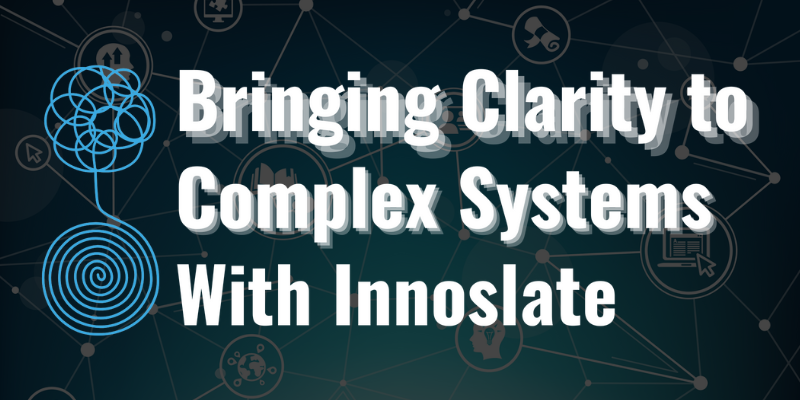Bringing Clarity to Complex Systems With Innoslate Webinar
Don't feel like reading? Watch the recording!
2 min read
Elizabeth Steiner
:
10/17/24 3:59 PM

Healthcare systems are becoming increasingly complex, involving various stakeholders, from clinicians and engineers to regulatory bodies and IT professionals. As medical technologies evolve, so do the challenges of managing them efficiently and safely. This is where Model-Based Systems Engineering (MBSE) comes in, providing a structured approach to managing complex systems.
However, many healthcare organizations face significant pain points when adopting MBSE. Fortunately, tools like Innoslate help address these challenges effectively.
Healthcare systems often involve numerous and conflicting requirements from various stakeholders. Clinicians, regulatory bodies, engineers, and patients have unique perspectives, and ensuring that these are captured and aligned can be daunting.
Navigating the stringent regulatory landscape of healthcare is a significant challenge. Regulatory bodies like the FDA impose rigorous medical devices and healthcare IT systems standards. The difficulty lies in maintaining traceability between system design and these regulations.
Related Post: ISO 13485 Compliance With Innoslate
Healthcare system development requires collaboration between various disciplines - clinicians, engineers, and IT professionals - all of whom speak different “languages.” Miscommunication between these groups can result in costly errors.
Validating complex healthcare systems is resource-intensive, often requiring physical prototypes or time-consuming tests. Yet, errors found late in the process can lead to major setbacks or even patient safety risks.
With Innoslate, you can accomplish:
Now that we’ve covered the main pain points let’s explore how MBSE, supported by Innoslate, can transform the development of the healthcare system. Here are three best practices that can help ensure successful implementation:
Defining clear, traceable requirements is crucial in healthcare, where patient safety and regulatory compliance are non-negotiable. Effective MBSE implementation begins with well-defined requirements that evolve as the system develops. Innoslate provides a structured Requirements View to manage, update, and track changes, ensuring that all stakeholders are aligned from the start.
Healthcare systems are safety-critical. Identifying and managing risks from the outset is essential, ensuring all potential failure points are addressed in the design. Innoslate integrates risk management into the system models, allowing teams to identify risks and link mitigation strategies directly to the relevant parts of the system.
Documentation in healthcare can be overwhelming, but it’s a key part of ensuring compliance and system traceability. Manual documentation processes are prone to errors, especially in large, complex systems. Innoslate automatically generates documentation based on system models, ensuring that every change and update is accurately captured. This reduces administrative overhead and ensures that teams remain compliant.
The complexities of modern healthcare systems demand robust, collaborative solutions. Model-Based Systems Engineering, when supported by the right toolset, addresses many of the challenges faced by healthcare organizations. Innoslate offers an integrated environment where healthcare systems can be developed with safety, compliance, and efficiency at the forefront.
By addressing key pain points such as managing complex requirements, ensuring compliance, and improving collaboration, Innoslate empowers teams to deliver safer, more reliable healthcare systems—faster and with fewer resources.
Ready to explore how Innoslate can transform your healthcare system development process? Contact us for a demo today.
Have questions about model-based systems engineering or requirements management? Talk to an expert and see how Innoslate can streamline your projects from start to finish.

Don't feel like reading? Watch the recording!
A Data Management Plan (DMP) is a crucial digital engineering tool for systems and digital engineers, serving as a visual framework that organizes...

An unfortunate fact of life is that it can sometimes be complicated - and for many engineers, so are today's modern systems. What makes these modern...